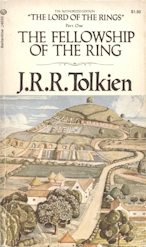
Part One of The Lord of the Rings
1970s Ballantine books
cover art by J.R.R. Tolkien (left)
2001 Del Rey paperback, 479 pages
cover art by Ted Nasmith (right)
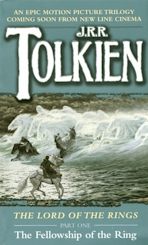
Denver Science Fiction & Fantasy Book Club |
 |
The Fellowship of the Ring (1954, 1965) Part One of The Lord of the Rings 1970s Ballantine books cover art by J.R.R. Tolkien (left) 2001 Del Rey paperback, 479 pages cover art by Ted Nasmith (right) |
 |
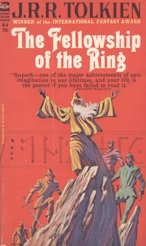 |
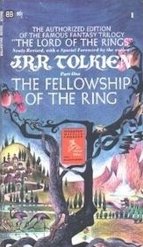 |
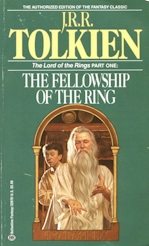 |
|
1965 Ace books - 448 pages (unauthorized edition!) cover art by Jack Gaughan |
1965 Ballantine books The authorized edition |
1990s Ballantine books 479 pages cover art by Michael Herring |
|
The Fellowship of the Ring "The Company of the Ring shall be Nine; and the Nine Walkers shall be set against the Nine Riders that are evil" --Frodo Baggins, ring-bearer, hobbit --Sam Gamgee, hobbit companion of Frodo --Gandalf, wizard --Legolas, from Northern Mirkwood, for the elves --Gimli, son of Glóin, for the dwarves --Aragorn, son of Arathorn, also called Strider, for men --Boromir, from the land of Gondor, for men --Merry Brandybuck, hobbit --Pippin Took, hobbit |
| Dan | 9 | Amy | 9.5 |
 |
10 Wow! Don't miss it 8-9 Highly recommended 7 Recommended 5-6 Mild recommendation 3-4 Take your chances 1-2 Below average; skip it 0 Get out the flamethrower! U Unfinishable or unreadable - Skipped or no rating given |
| Cheri | 10 | Barb | - | ||
| Aaron | 7 | Cynthia | 10 | ||
| Jackie | 10 | Ron | 9 | ||
| Mary | 10 |
|
Aaron's Commentary
J.R.R. Tolkien - The Fellowship of the Ring
There's no disputing that The Lord of the Rings (LOTR) is one of the most important and influential works of fantasy ever written. (Some would say the most important, but I think Homer has too many years on Tolkien to make that call yet. Let's see how we feel about LOTR in a thousand years.) But how much individual readers enjoy LOTR varies. LOTR readers break down roughly into three categories: (a) those who see no merit in it at all; (b) those who admire and respect it, but do not own a "Frodo Lives!" t-shirt; and (c) those who reread it at least annually and are often heard to wish that they could go live in the Shire. The first category consists of persons so imagination-impaired they are not worth discussing. What distinguishes the second and third categories, I believe, is to what extent the reader is drawn into the story. If you become deeply involved in Frodo's adventure, you will love LOTR; if not, you will simply admire LOTR. I can claim a little insight into both reactions, because when I first read it I did get drawn into the story of LOTR, but not until the second volume of the trilogy. Throughout The Fellowship of the Ring, I enjoyed the book but was never swept away. It wasn't until I caught myself reading The Two Towers late into the night, anxious about whether Samwise could possibly survive his encounter with Shelob, that I realized I was hooked. I know my reaction is not unique - many readers find that it takes a while to get involved in Frodo's story. I can think of two reasons for this. First, Tolkien hoped to do more than simply tell a good yarn. He wanted to create an entire mythology, which he believed British culture was lacking. In order to pursue this goal, at which he was astonishingly successful, Tolkien had to begin his tale with lengthy recitations of history and back-story that are less than absorbing to the casual reader. Second, many readers find Frodo's initial adventures the weakest passages of LOTR. (Let me remind hard-core LOTR fans that, despite these mild criticisms, I really like LOTR and would heartily recommend it to anyone. Please don't hurt me.) Tom Bombadil is a fun character, but the hobbits' encounters with him and then with the barrow-wights are almost entirely unrelated to the rest of the narrative. What's more, I wonder if it doesn't start things off on the wrong foot to have Tom rescue the hobbits the first time they run into trouble. It leaves the impression that to succeed in his quest, Frodo will always need others to bail him out whenever he gets into trouble. (And it is a criticism sometimes leveled at LOTR that, in fact, he does.) The story gathers interest midway through, once Aragorn has joined Frodo's quest with the Black Riders in hot pursuit. The second half of the book is then punctuated by the memorable showdown between Gandalf and the Balrog. Even during the stretches of this book when the story moves at a leisurely pace, it is well worth reading for Tolkien's entertaining prose. Every Tolkien fan has some favorite passages. In The Fellowship of the Ring, the scene I often find myself returning to is the conversation between Frodo and the elf Gildor. Gildor repeatedly makes broad observations such as, "The wide world is all about you: you can fence yourselves in, but you cannot for ever fence it out," and, "Advice is a dangerous gift, even from the wise to the wise, and all courses may run ill." To all of which Frodo wryly responds, "And it is also said, 'Go not to the Elves for counsel, for they will say both no and yes.'" And thanks to passages like that, if you ask me if The Fellowship of the Ring is a great book, I will say both no and yes. What do you think? Your comments are welcome. Please send them to vanaaron@excite.com |